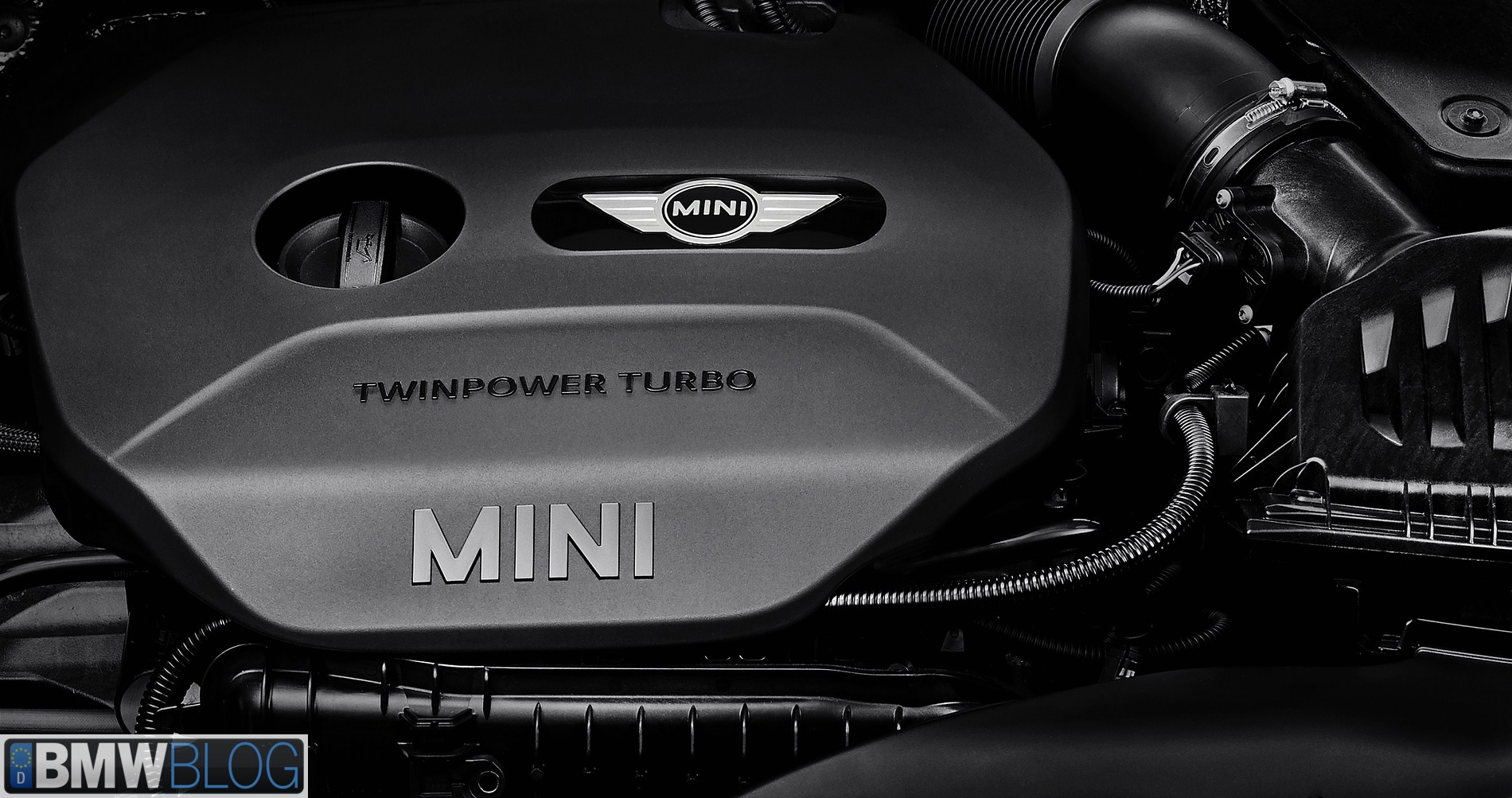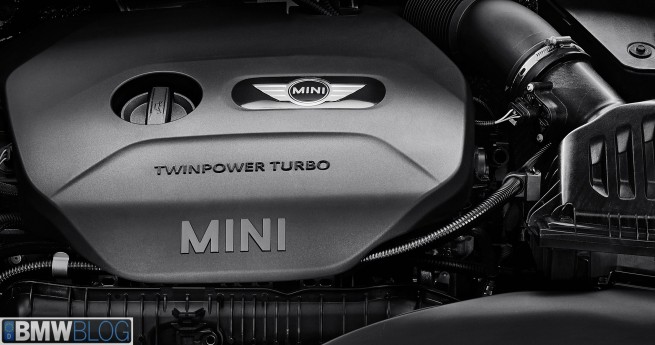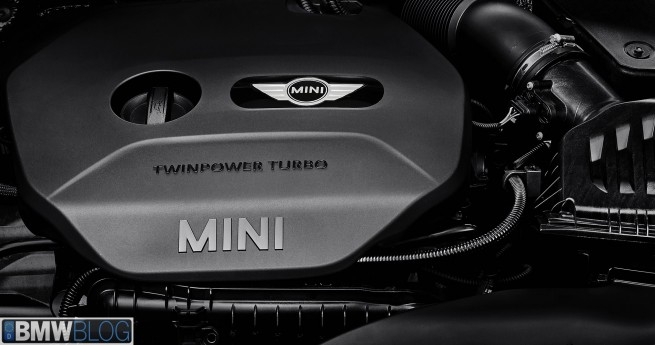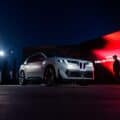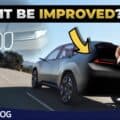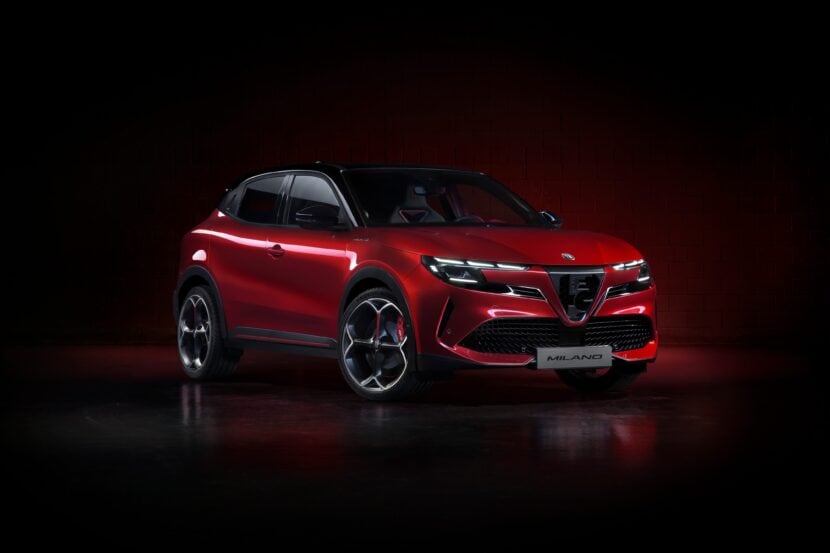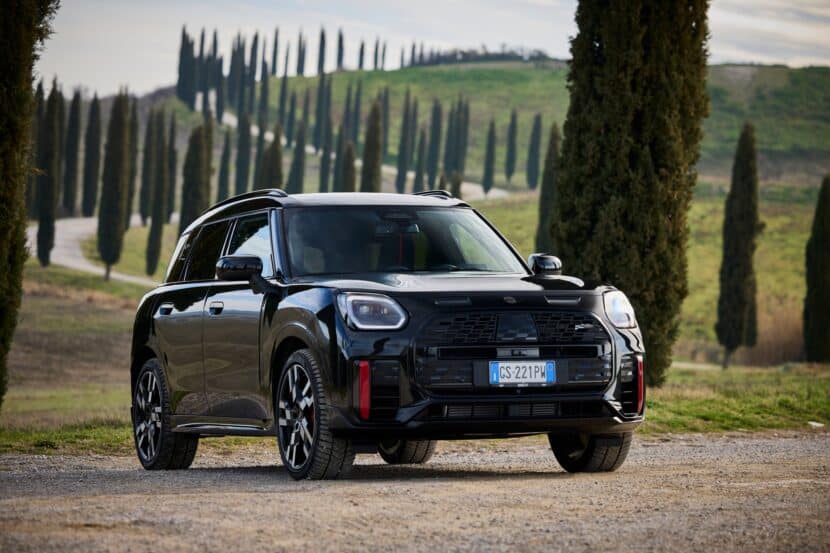On October 18th, MINI F56 will make its world debut at the Oxford plant.
Ahead of the official unveil, MINI has released some technical information on the new F56 models and the engines found under the hood. While the three and four-cylinder powerplants were expected, an interesting tidbit is the two suspension setup the new MINI will receive.
Also almost all MINI F56 models will use the three-cylinder 1.5 liter displacement with the top models getting the new turbocharged four-cylinder BMW B48. The MINI Cooper S F56 with the 2.0-liter turbocharged four-cylinder BMW B48 makes 192 hp and maximum torque of 280 Newton meters, with the short-term overboost mode producing 300 Newton meters.
The three-cylinder turbo BMW B38 offers 136 hp and starting at 1,250 rev / min, torque of 220 Newton meters, short-term up to 230 Nm. The 1.5-liter three-cylinder diesel turbo BMW B37 (MINI Cooper D F56) makes 116 hp and a maximum torque of 270 Newton meters.
Full Details
Maximum driving fun and the most economical fuel consumption – a two-fold victory in terms of performance and efficiency has helped the latest MINI models to score top marks over their rivals in comparative tests regarding engine technology and driving performance. This is made possible by a new generation of engines and the consistent expansion of the MINIMALISM technology which will be available in all models as standard.
BMWBLOG First Drive: BMW 1 Series with 3-Cylinder Engine
For the first time, the MINI models of the future will use both three and four-cylinder engines that not only cover an even broader range of performance, but also set new standards in terms of output, efficiency, comfort and reliability. The quality of the new engines is a direct result of the unique development expertise of the BMW Group in the area of drive technology. Both brand and model-specific design ensure that they have performance characteristics typical of MINI.
More power and lower CO2 emissions thanks to MINI TwinPower turbo technology.
A common feature of the new drive units is the MINI TwinPower turbo technology, which optimises both performance and efficiency. In the case of the petrol engines, this technology package includes turbocharging, direct fuel injection, variable camshaft control on the intake and outlet sides (dual VANOS) and, in the more powerful versions, fully variable valve control according to the model of the BMW Group’s patented VALVETRONIC system. The diesel engines also have a turbocharger and the latest generation common rail direct injection system.
All new engines were designed for the transverse configuration typical of the MINI and feature a compact and lightweight design. They also comply with exhaust standard EU6. Both the petrol and diesel versions of the engine are equipped with an aluminium crankshaft housing in a closed-deck configuration. A forged steel crankshaft with integrated balancing shaft drive, weight-optimised piston and forged conrod contributes to the high level of performance within the engine through reduced frictional coefficients. The three-cylinder engines each have a countershaft to enhance smooth operation, while the four-cylinder model has two such shafts that counter-rotate. The cylinder head in all engine variants is made of aluminium.
There are further similarities in terms of the layout of the ancillary units and the design of the map-regulated oil pump and the mechanically activated coolant pump. As the coolant pump supports both the generator and the climate compressor, the drive units have a more compact design.
For the market launch of the new drive generation, MINI is presenting a three-cylinder combustion engine that generates an output of 100 kW/136 bhp from a cubic capacity of 1.5 litres. At the same time, a 141 kW/192 bhp variant of the newly developed four-cylinder combustion engine is to be presented that has a cubic capacity of 2.0 litres.
A new generation of engines with typical MINI performance characteristics.
All of the new petrol engines feature spontaneous responsiveness, high torque characteristics and supreme power delivery. Thus, for example, the 1.5 litre three-cylinder engine reaches its maximum torque of 220 newton metres at an engine speed of 1 250 rpm; this can be increased briefly to 230 newton metres by means of the overboost function. The 141 kW/192 bhp four-cylinder model actually achieves a torque of 280 newton metres with the same engine speed (300 Nm with overboost). The maximum speed of all new petrol engines is 6 500 rpm.
The engine’s sporty character is favoured by the position of the turbocharger integrated in the exhaust manifold. The short path of the exhaust stream enables the charging system to be activated promptly and effectively. In addition, the emissions pattern of the engines is optimised by the positioning of the catalytic converter and an electronically regulated waste gate. An efficient and precisely dosed fuel supply system facilitates direct injection with centrally positioned injectors between the valves and directly next to the spark plugs. The electronic control for camshaft positioning and the stroke of the intake valves are further technological elements that optimise the responsiveness and the consumption and emissions readings of the new petrol engines for MINI.
The new diesel engines combine superior traction with convincing cost-efficiency and once again significantly enhance the high level of performance and efficiency already familiar in the MINI. Its new design ensures improved thermodynamic characteristics, while the common rail direct injection system operates with a maximum pressure of up to 2,000 bar and thereby ensures a particularly precise and thriftily dosed fuel supply.
At the head of the pack in the new generation of engines is a three-cylinder diesel model, which uses a capacity of 1.5 litres to generate a maximum output of 85 kW/116 bhp and a maximum torque of 270 newton metres. With its spontaneous power delivery and high level of efficiency, this engine produces a tangible advantage in terms of driving pleasure and measurable consumption benefits that add up to a more than 7 per cent reduction in comparison with the previous drive mechanism.
Newly developed manual and automatic gearboxes will make a further contribution to the intensive driving pleasure that MINI has to offer and will enhance the efficiency of the drive technology. The new manual gearboxes feature an innovative gear sensor which adapts the engine speed when gear-shifting. This permits especially fast and sporty shifting with always the right engine speed available during gear shifts.
The automatic start-stop function can also be used in future MINI models in conjunction with the automatic gearbox, avoiding unnecessary fuel consumption when stopped at junctions or when caught in heavy traffic. In addition for cars equipped with a navigation system, gear selection can be adapted to the current route. In this way for example the suitable gear is selected before reaching junctions or before cornering.
Chassis technology
Thanks to the continued optimisation in the area of wheel suspension, spring system, damping, steering and braking, driving pleasure looks set to become an even more intense experience in future MINI models. In combination with the features characteristic of the MINI pedigree, such as the vehicle’s low centre of gravity, wide track gauge, short overhangs, transverse engine, particularly rigid bodywork and intelligent lightweight design, innovative detailed solutions in the chassis area make for even more precise and sporty handling. The agility that characterises all MINIs is also combined with further advances in the area of driving comfort. This is the first time that MINI is to offer electrically adjustable dampers that can be used to optimise sportiness and driving comfort.
Tried-and-tested construction principle, completely redeveloped components.
The complete redesign of the chassis for future MINI models continues to focus on the tried-and-tested structure of the single-link spring strut axle at the front and the multi-link rear axle, which is unique among MINI’s competitors; it also to includes component optimisations in terms of the choice of material and geometry. The dampers on the front and rear axles are uncoupled from the bodywork by means of complex struts. In combination with the reduction of the unsprung inertial masses, this makes it possible to increase both agility and driving comfort. Newly developed and aerodynamically optimised light alloy wheels are manufactured in a forging process requiring the use of less material. The use of roll-friction reduced tyres and friction-optimised wheel bearings help minimise the unsprung and rotating masses. They contribute considerably to reducing fuel consumption and CO2 emissions. Underfloor airflow is improved through the respective design of components and additional trim also serves to enhance the car’s sporty and agile handling by reducing lift forces.
In its latest incarnation, the front single-link spring strut axle features increased component rigidity. In combination with a modified axial kinematic movement, this creates ideal conditions for particularly agile manoeuvrability and steering control that is largely freed from the influence of the drive mechanism. The wider track gauge also makes a further contribution to optimising sporty characteristics.
Consistency in lightweight design has also had an influence over driving performance. The use of aluminium in the pivot bearing and high tensile steels in the front axle bearing and in the transverse rocker arms reduces the unsprung inertial masses. The innovative torque roll axial bearing enables both agility and comfort to be tangibly increased. This component consists of an engine and a transmission bearing that together absorb the weight of the engine and also support the torque in conjunction with the engine swivel support. The engine block is hydraulically attenuated, further enhancing the increase in comfort because this design prevents the engine from surging under the influence of uneven road surfaces.
By further developing the multi-link rear axle, MINI is building on its unique position in the competitive field. Key changes – wider track gauge, the use of high-strength steels and greater rigidity in the wheel suspension – take place in tandem with the modifications to the front axle. The spatial design of the rear axle also leads to improved entry comfort and to more space in the rear as well as a larger luggage compartment volume which is also easier to load.
More precise, more comfortable: electromechanical power steering.
The next generation of the EPS (Electronic Power Steering) used for MINI models offers speed-dependent support for the steering force. In future it will take less steering force to operate this, while the system will also meet the requirements for the use of a parking assist function.
The further development of the steering system will promote agility, driving safety and comfort in equal measure. Thanks to the complex wheel suspension system, the steering ratio can be implemented very directly. Likewise, the optimisation of the front axle has a direct impact on the steering, as it facilitates a sensitive steering style when negotiating bends in a sporty style. This effect is further enhanced by the use of so-called torque steer compensation. This torque steering compensation counteracts a tendency towards self-steering in powerful front-wheel drive vehicles due to differences in torque between the right and left front wheels. In future, active rotational damping will provide for gentler and therefore more precisely controllable vehicle reactions in rapid evasion manoeuvres and when negotiating particularly sporty bends.
Advanced brake system for more comfort and security.
Another important contribution to driving pleasure derives from the improvements in the function and weight of the brake system, which is more closely tailored to the specific models. The new system impresses with its excellent durability with low unsprung inertial masses. This results in greater comfort, more precise dosability and a longer service life. The efficiency of the MINI can also be increased through targeted innovations in the brake system. Thus, optimised coatings help to reduce the residual braking momentum, thereby enhancing the vehicle’s rolling friction.
Excellent long-lasting properties are achieved through improved surface protection on the disc brake chamber and brake callipers. Another plus point is the optimisation of the brake cooling system through refined brake protection plates and a redesigned brake cooling shaft.
A first for MINI: adjustable dampers.
In a move designed to emphasis the sprightly character of the MINI even more, the spring and damper adjustment will be optimised. On the front axle, spring struts made of aluminium and steel and two-pipe compression dampers with coated pistons and a degressive damper characteristic curve are used. The support bearings on the front and rear axles will have three paths in future. The characteristic curves of the support bearing and additional springs have also been optimised on a functional basis, as have the helical springs installed on both axes. The stabilisers on the front and rear axles have holdings bearings and will have a tubular design in future, helping to reduce weight in the chassis area.
In addition, MINI will introducing adjustable dampers for the first time. The electric control of the damper valves allows the characteristic response to uneven road surface to be varied. Two characteristic curves are available for adjusting the damper and these can be activated at the flip of a switch. The traction and compression level in the shock absorber can be adjusted by selecting the appropriate setting. Depending on the driver’s preferences, it is possible to choose either an emphatically sporty or a balanced, comfortable chassis. This means that it is possible to enjoy greater driving comfort in poor road conditions or an emphatically sporty driving style on an even road surface.


